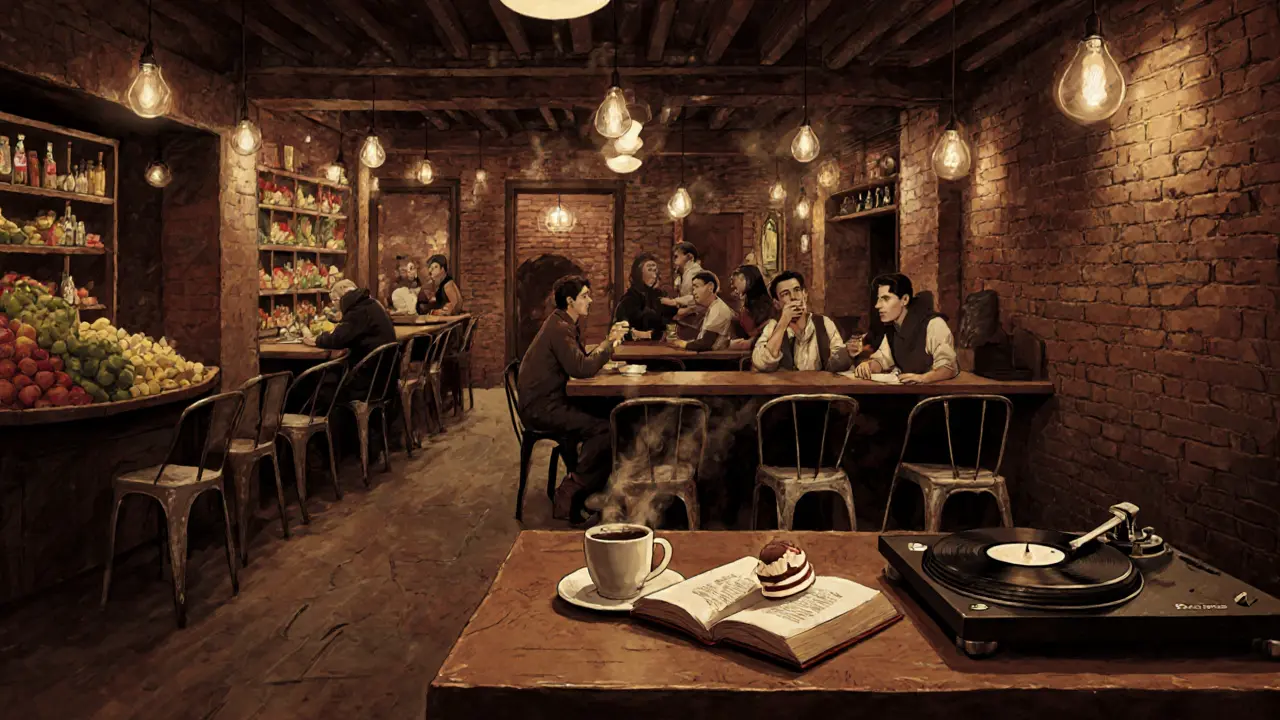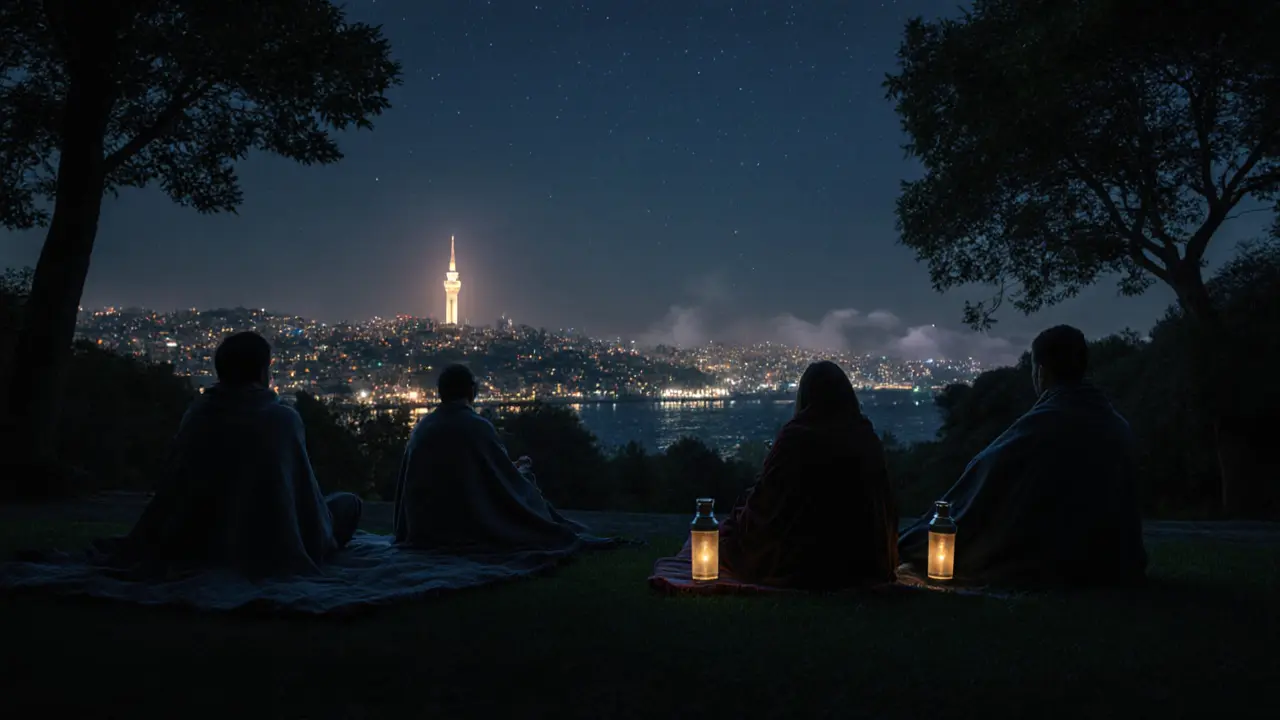The Insider's Guide to Nightlife in Istanbul: Where to Go and What to Do

When the sun sets over the Bosphorus, Istanbul doesn’t sleep-it transforms. The city’s nightlife isn’t just about drinking or dancing. It’s about hidden rooftop lounges with skyline views, underground jazz clubs tucked into Ottoman-era buildings, and kebab shops that stay open until dawn because why not? If you think Istanbul’s nightlife is all about clubs and loud music, you’re missing half the story. The real magic happens when you step off the main drag and let the city guide you.
Start in Beyoğlu: The Heartbeat of the Night
Beyoğlu is where Istanbul’s night begins. İstiklal Avenue is crowded, yes-but don’t just walk it. Turn down the side streets. In Çiçek Pasajı, the old wine passage, you’ll find historic taverns where locals sip raki with meze and talk politics until 3 a.m. This isn’t a tourist trap-it’s a living room for Istanbul’s intellectuals, artists, and retirees who’ve been coming here for decades.
For something quieter, head to Asmali Mescit. It’s a narrow alley lined with tiny bars, each with its own vibe. One might be all vinyl records and dim lights, another with live oud music and no menu-just ask what’s on tap. The crowd here is mixed: students, expats, grandmas with scarves pulled tight. No one cares if you’re dressed up or in jeans. The rule? Be respectful, be curious, and don’t rush.
Where the Locals Go: Kadıköy on the Asian Side
If you want to see how Istanbul natives unwind, take the ferry to Kadıköy. It’s less flashy than Beyoğlu, but way more real. The neighborhood has a college-town feel-think indie coffee shops by day, craft beer bars by night.
Bar 61 is a favorite. It’s not on any guidebook. You’ll find it down a stairwell behind a fruit stand. Inside, it’s all exposed brick, mismatched chairs, and a DJ spinning rare Turkish funk from the ’70s. The bartender doesn’t speak English, but he’ll pour you a glass of rakı with a lemon slice and a smile. Order the höşmerim-a sweet cheese dessert with syrup-and let the night stretch out.
Don’t miss Yeni Bahar, a legendary jazz bar that’s been open since 1983. The owner, Mustafa, still greets regulars by name. The band plays standards, but with a Turkish twist-think çiftetelli rhythms mixed with Miles Davis. No cover charge. No VIP section. Just good music and a crowd that knows how to listen.
Clubbing Like a Local: Beyond the Tourist Clubs
Yes, there are big clubs in Istanbul-like Reina and Karaköy Live. They’re flashy, expensive, and packed with influencers. But if you want to dance where locals do, skip the velvet ropes.
Bar 1919 in Karaköy is the real deal. It opened in 2015 as a speakeasy-style lounge and slowly became the city’s most respected underground spot. The music? Deep house, techno, and experimental electronic. The crowd? Designers, musicians, architects. The dress code? No suits. No flip-flops. Just cool, casual. The door is unmarked-you find it by the line of people who know where to look.
For something wilder, try Barış in Nişantaşı. It’s not a club. It’s a party that happens in a converted warehouse. The music changes every weekend: one night it’s Turkish hip-hop, the next it’s Balkan brass. The DJ doesn’t play tracks-he plays records, often ones he dug out of a basement in Ankara. People dance on tables. No one gets kicked out. Everyone leaves at sunrise.

Midnight Eats: The Food That Keeps the Night Alive
Nightlife in Istanbul doesn’t end with drinks. It ends with food. And the best food comes after 2 a.m.
Çiya Sofrası in Kadıköy is open until 4 a.m. every night. It’s not fancy. It’s a long table with 30+ dishes on offer: grilled octopus, lamb stew with pomegranate, stuffed grape leaves, and a spicy eggplant dip that’ll make you forget your name. Locals come here after clubs. Tourists come here because they heard it’s the best. Both are right.
For something simpler, find a balık ekmek boat on the Bosphorus. These floating fish sandwich stalls operate until dawn. Fresh grilled mackerel, crispy bread, a squeeze of lemon, and a side of pickled onions. Eat it standing up, with your back to the water, while the city lights shimmer across the strait. It’s not a meal. It’s a ritual.
Hidden Gems: Rooftops, Bookstores, and Secret Gardens
Not every night needs bass. Some nights need silence.
İstanbul Modern’s Rooftop (open Friday and Saturday nights) has one of the best views in the city. The entrance is unassuming-a small door next to the museum. Inside, it’s quiet. A few people sip wine. A saxophone plays softly. The lights of the Galata Tower glow across the water. No DJs. No bottles on the table. Just the city, the breeze, and the feeling that you’re the only one who knows it’s open.
İstanbul Kitaplığı is a bookstore that turns into a literary lounge after 9 p.m. You can borrow a book, sit by the fireplace, and sip Turkish coffee. On Thursdays, they host poetry readings in English and Turkish. No tickets. No reservations. Just show up. The owner, Emine, remembers everyone’s favorite author.
And then there’s Çamlıca Park-a hilltop garden with no bars, no music, no crowds. Locals come here at midnight with blankets and thermoses of tea. They sit and watch the skyline light up. It’s not nightlife as most people know it. But it’s the kind of night that sticks with you.

What Not to Do
Don’t walk alone in empty alleys after 2 a.m. Stick to well-lit streets. Don’t assume everyone speaks English. Learn three Turkish words: lütfen (please), teşekkür ederim (thank you), and kaç para? (how much?).
Don’t go to clubs expecting to see the same DJs as in Berlin or Miami. Istanbul’s scene is local-first. The best music isn’t on Spotify-it’s on the lips of the person next to you at the bar.
And don’t rush. The night here doesn’t start at 10 p.m. It starts when the first kebab vendor lights the grill. That’s when you know it’s time to go out.
When to Go
Spring (April-June) and fall (September-November) are perfect. The weather’s mild, the crowds are smaller, and the energy is electric. Summer is hot and packed. Winter? Quiet. But if you go in December, you’ll find the city lit up for the holidays, with live music in every corner and steam rising from street-side simit vendors.
Weekends are alive. But the real magic? Thursday nights. That’s when the locals say the city wakes up.